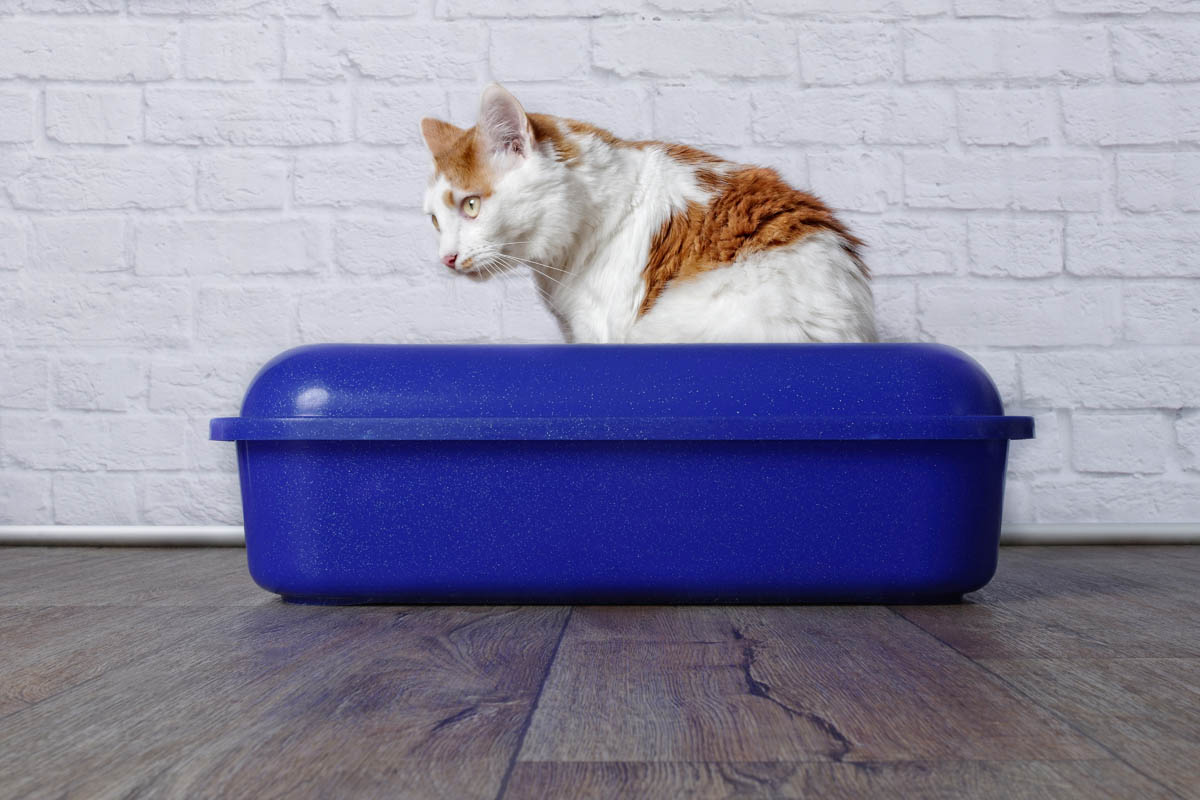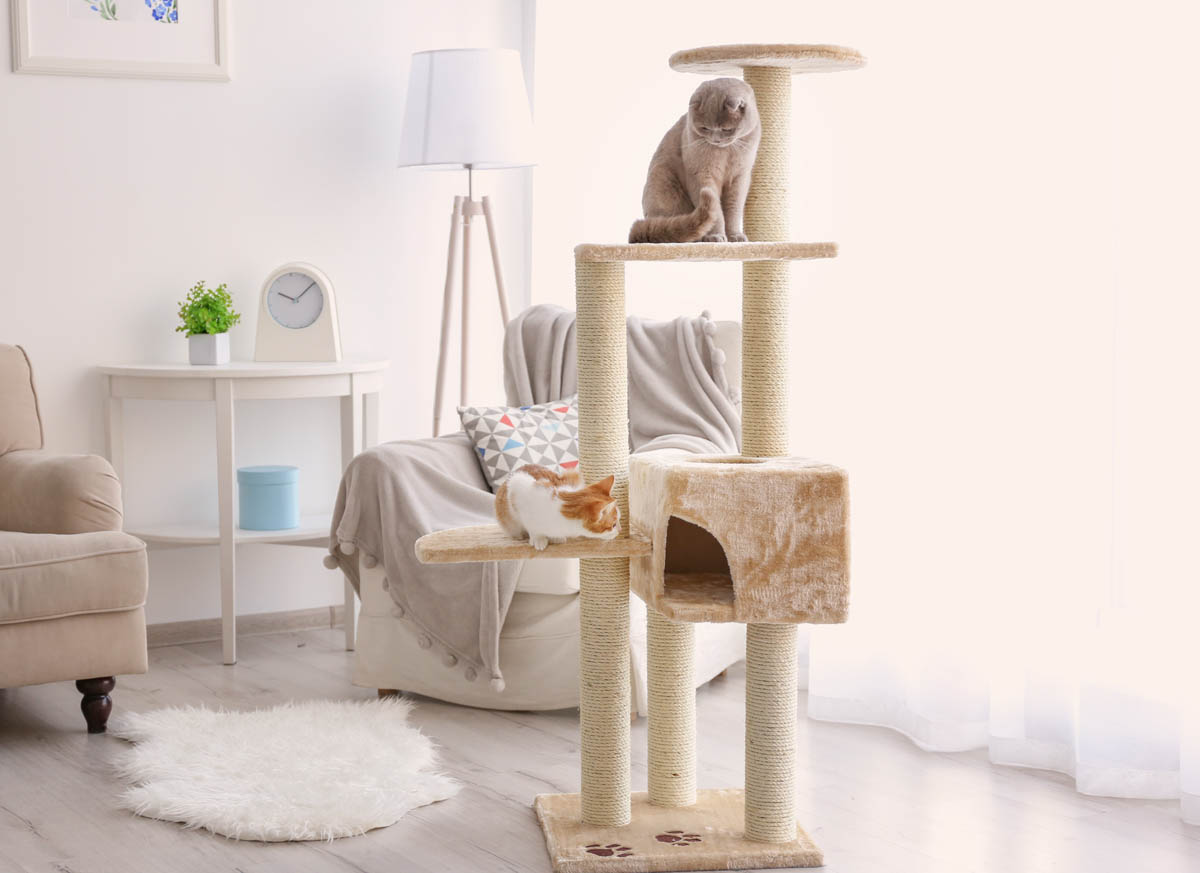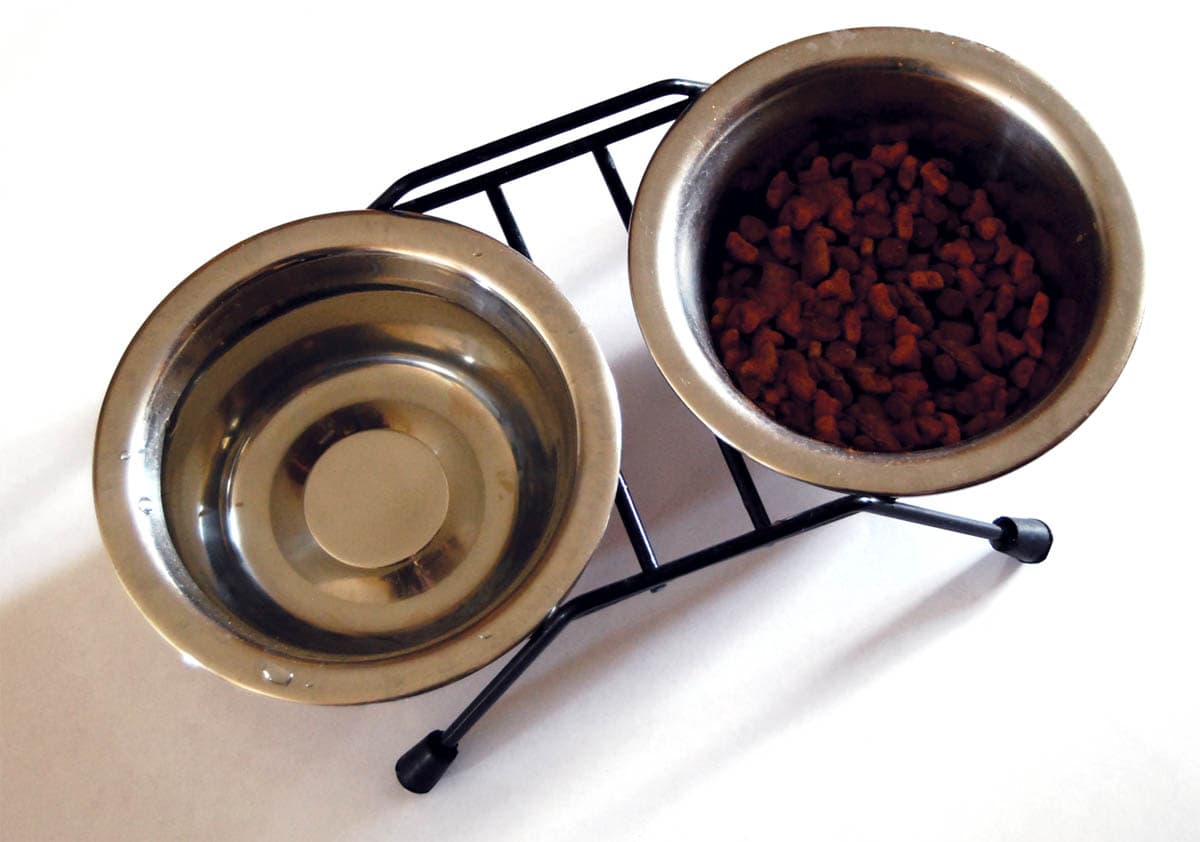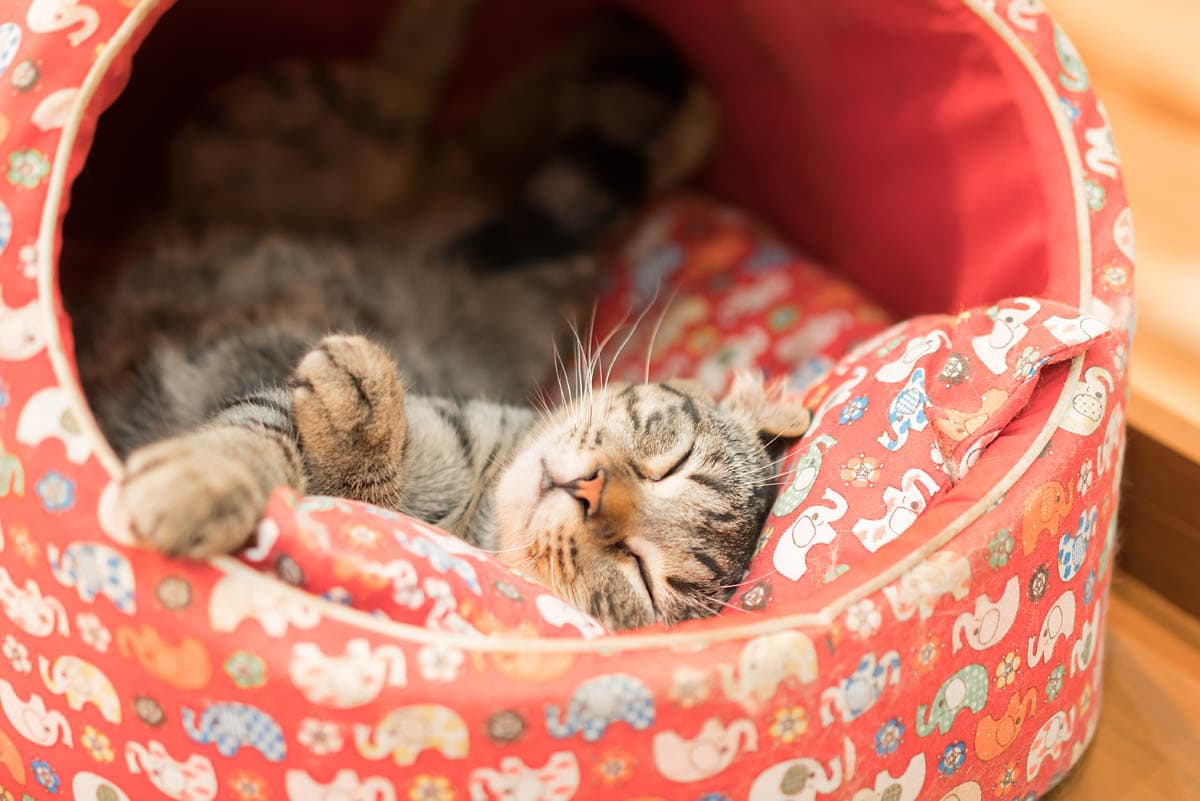Bringing a new kitten into the house is an exciting and happy time. But before your new bundle of fluff arrives, it is important you prepare yourself with the basics that your kitten will need.
Cat product checklist
- Litter tray and scoop
- Cat litter
- Scratching post
- Food and water bowls
- Food
- Carrier
- Toys
- Bed
- Cat books
- Flea and worming products
- First aid kit
- Grooming products
- Pet health insurance
- Identification
Litter trays

These come in all shapes and sizes such as self-cleaning, covered (or hooded), uncovered. I recommend a small litter tray for a kitten, as larger ones can be hard for a kitten to climb into. Another option for adult cats is a large plastic container with high sides. These are cheap and contain cat litter easier than uncovered litter trays.
Along with your litter tray, you will also need a litter scoop and some cat litter and a disinfectant. I recommend bleach used at a ratio of 1 part bleach to 32 parts water. Rinse thoroughly and dry before re-adding cat litter. Scoop daily to remove solids and empty/disinfect once a week.
There are so many different types of cat litter on the market now, clay, clumping, crystal, corn, recycled paper and more. Some can be used as garden mulch (but not where fruit or vegetables grow), others need to be disposed of in the garbage.
Cat Tree/Scratching Post

Cats need to scratch and enjoy scratching. Providing your cat with a scratching post will reduce the chances of your cat using your furniture or carpet. As you can see from the image above, cat trees and scratching posts come in a vast variety of shapes and sizes to choose from. I recommend tall posts with multiple perches where money and space permit.
Tip: You can spend as little or as much as you want, but I have found that cheaper cat trees tend to be flimsy and don’t last long, so it is recommended you look for a good quality, sturdy cat tree which will last for years. I have had one of the trees in the image above for ten years, and it is in as good condition now as it was when I first got it.
Food and water bowls

You can buy cheap plastic ones, metal ones, pottery ones, automatic ones and even drinking fountains. My personal favourite is the ceramic as they are more sturdy and therefore there is less of a chance of the bowl being knocked over, plus they can be put in the microwave should you decide to warm the food before feeding your cat.
Tip: Plastic bowls are not recommended as they can become easily scratched, which can harbour bacteria and are a contributing factor for feline acne. Stick with ceramic or stainless steel if possible. Choose bowls that are wide enough that the whiskers don’t touch the side.
Cat Food

A premium quality brand is the best, and select one for the appropriate age of your cat. For example, if you adopt a kitten, then buy kitten food etc. Ask what the kitten has been eating at his prior home and feed that for the first few days. If you would like to change to a different type or brand of food, slowly introduce the new food while decreasing the amount of old food.
It is a good idea to feed a variety of foods such as raw, tinned and dry food. I also suggest feeding raw chicken necks two to three times a week to help with dental care.
Tip: Store dry food inside the bag in a plastic container. Avoid buying large bags of food which can lead to storage mites infesting the food.
Cat carrier

This is essential for when you take your cat to the vet. You can buy hard plastic cages or canvas ones as seen in the image above. The canvas ones pack down fairly small when not in use, but the plastic ones are more sturdy and can be washed out/disinfected if necessary.
An old blanket or towel should be put in the bottom of the carrier to make it a little more comfortable and absorb any urine or feces if your cat has an accident on the way to the vet.
Tip: Look for a cat carrier that opens from both the front and the top.
Cat toys

The list of toys is endless. All of my cats have enjoyed the wand-type toys (DaBird is a favourite), other toys include toy mice, laser pointers (be careful to avoid pointing it at their eyes), puzzle toys you can even get giant wheels for your cat to play in. If you are crafty, you can also make your own toys. Be careful when choosing cat toys, watch out for any small parts which can easily be chewed off and swallowed.
Tip: Rotate toys to avoid boredom.
Cat Bed

There is a vast array of cat beds on the market from relatively plain to fancy. A kitten will do just fine with a cardboard box and a soft blanket or a specially made cat bed, you are only limited by your budget, taste, and imagination. Be warned, while a cat bed is nice; they may prefer your lap or even the dog’s bed!
Tip: Look for a bed that is machine washable.
Worming/Flea Control Products
I prefer to use the products sold and recommended by my veterinarian or a reputable veterinary supplier. There are some excellent products on the market these days which are applied to the back of the neck once a month. I have had great success recently with Comfortis tablets in treating not only fleas but flea allergy dermatitis. While I am not a fan of tablets, this was the only product that worked on my cat. Always follow the manufacturer’s instructions when using flea and worming products and don’t forget to treat your cat for heartworm too.
First aid kit

Customise your first aid kit to suit your cat. When administering medications or antiseptics to cats, always make sure they are safe to use. Many products are toxic to cats, that includes over the counter painkillers and phenolic antiseptic products which turn white when water is added, such as Dettol. Iodine (Betadine) and chlorhexidine are safe antiseptics for cats. Also, include a tick remover in your first aid kit and the phone numbers of your veterinarian and an emergency clinic (if your veterinarian doesn’t offer a 24/7 service).
Grooming products

You may or may not wish to groom your cat if it is shorthaired; it is entirely up to you. Many cats do enjoy the attention and time spent with their carer. A brush and a comb are a must for longhaired breeds who require daily grooming.
Nail clippers for trimming claws, I use regular nail clippers for humans, but if you prefer, you can buy nail clippers for cats and dogs. Many of these involve putting the nail into a hole like a guillotine which can help reduce the chances of cutting too much nail off, which will result in bleeding, and pain. Personally, when trimming, I aim to remove a conservative 2 mm from the nail and have never had problems.
Pet health insurance
We never know when we are going to need this. Unexpected sickness or injury can and do happen. We recently had to find $1,400 for our Singapura which included a consultation fee, blood tests, anesthesia and biopsy, laboratory diagnosis, hospital care and ultimately euthanasia. It is a lot of money to find on short notice. Pet insurance can help to take the pressure off but do your homework. The cheapest may not always be the best. Questions to ask include:
- Is there an excess?
- How much will they cover you per claim?
- How much do they cover per year?
- Do they insure senior cats?
- Do they cover pre-existing conditions?
- Is there a waiting period?
- Does insurance cover prescriptions?
- Does it include annual health checks?
- Items not included?
Identification
Cat collars and tags are another option; the downside is that they can slip off and become snagged on things like tree branches. It is now possible to buy collars with your cat’s name and a phone number embroidered into the collar, which saves adding a tag.
Outdoor cats should wear a GPS tracker.
Other important information
While this article has focused on products, it is also essential to make a list of services. Locate the list in an easy to reach place, such as your refrigerator, contacts include:
- Your cat’s veterinarian
- An emergency veterinarian
- A pet sitter or boarding cattery
- Pet poisons hotline
- Your cat’s insurance company, and the policy number
- Cat-groomer
- Microchip company (you will need to contact them if you ever move to update your details)
A downloadable and printable cat products checklist can be found here.

